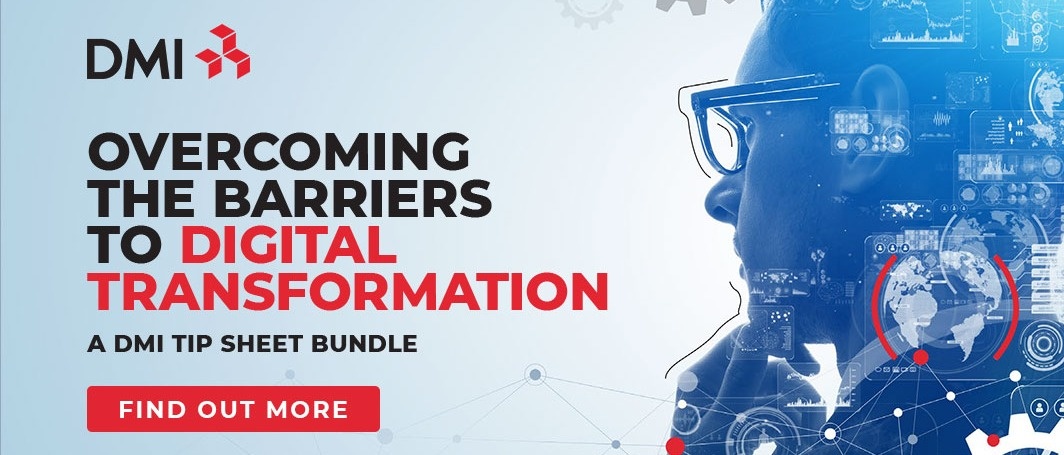
Government CIO's Guide to Improving the Public's Experience of Digital Agency Services
If you had to make a list of some of the major issues facing federal agencies today, lagging technology would undoubtedly be at the top.
In the late 1990s and even into the early 2000s, the goal of technological integration was simple: you simply needed to retrieve basic information about a federal agency online so that it would be easy for citizens to refer to. In the context of an agency like the Department of Motor Vehicles, that meant a basic website with contact information, operating hours, and the bare minimum of other data.
Flash forward to today and expectations have changed dramatically. People don't just want to find the phone number to the local DMV. They want to be able to renew their license. They want to be able to pay for a parking ticket. They want to perform whatever tasks they need without leaving their home — the list goes on and on.
The same is true of other federal agencies that serve their community members and who are increasingly taking advantage of modern technology. That's ultimately why it's so critical for government CIOs to improve the public's experience of federal agency services; the people who work in these communities have come to expect frictionless digital experiences, which means that you need to do whatever you can to provide it. No exceptions.
Bringing Federal Agency Services into the Modern Era
One of the best ways to improve the public's experience of federal agency services involves changing the mindset that a lot of people have about these solutions in the first place.
Case in point: too many people in federal agencies think that because the end-users don't have a choice about which services to use, they'll be willing to deal with a sub-par or an otherwise unpleasant experience simply because there is no other alternative. In reality, there should always be an emphasis on improving and innovating such services, even if there is no immediately obvious "incentive" like competition to do so.
Along the same lines, those working in leadership at a federal agency need to understand that they serve a much broader audience than most. It's their duty to serve everyone within their communities with the best services possible.
As a result, they can't ignore certain portions of the population. But at the same time, they can't allow that to evolve into the assumption that a "one size fits all" approach to their digital services will be enough to get the job done. This is particularly true in larger metropolitan areas. Only by making an effort to truly understand the needs of their citizens and the problems that they're facing will they be able to come up with the right digital solutions to help solve them.
Another key part of the path to improving the public's experience of federal agencies involves relying on as much data as possible to help identify and correct certain gaps that may exist in the customer experience.
Even though true "smart cities" may be a few years off, most municipalities are still generating an enormous amount of data on a daily basis. Hidden inside that data is information about trends and patterns that likely would have gone undiscovered otherwise. The use of analytical tools can be a great way to extract as much insight from that data as possible, thus paving the way to digital services that are better designed and more thoughtfully constructed.
Overall, there are three core principles that government CIOs must adhere to before, during, and especially after a digital transformation project as these services continue to evolve. As stated, the first step involves gathering as much information about your users as possible. Without that, you don't have a "solution" at all; you have "a solution in search of a problem," which ultimately helps no one.
Next, you need to tie the citizen experience to a particular mission outcome. What are your users trying to accomplish and how do you help them do precisely that? If you can not only help meet that need but do so in a more efficient way than they currently have available to them, you create stronger experiences across the board.
Finally, you need to create a unified vision for change — one that serves both parties equally. You can't offer someone a service and hope that they adopt it simply for the sake of it. It needs to bring legitimate value to their lives. They need to be able to do something meaningful with it that they couldn't before it was introduced. Provided that you're able to check those three boxes, user adoption won't be a thing you have to worry about any longer.
Your Digital Government Transformation Partner
At DMI, we believe that the path to digital government is achieved through creating a more secure, centralized, seamless, and cost-effective IT architecture and ecosystem that leverages data to inform decisions and transform operations, mobility to support mission needs anytime, anywhere and platforms to provide the flexibility and collaboration needed to ensure reliable mission execution. DMI brings years of experience in digital transformation to the table, with hundreds of federal contracts awarded since 2012.
Through the use of our managed IT services, our optimization strategy is focused on improving current operating processes. We continuously monitor performance to maximize government resources, secure systems, and ensure efficiency and continuity along the way. We believe that digital transformation in government means cloud migration and, in the process, the elimination of legacy applications and the reduction of technical debt. All this requires an experienced transformation partner who can navigate government processes with agility, while delivering meaningful change.
Contact us to learn more and start your agency’s journey towards digital transformation.
